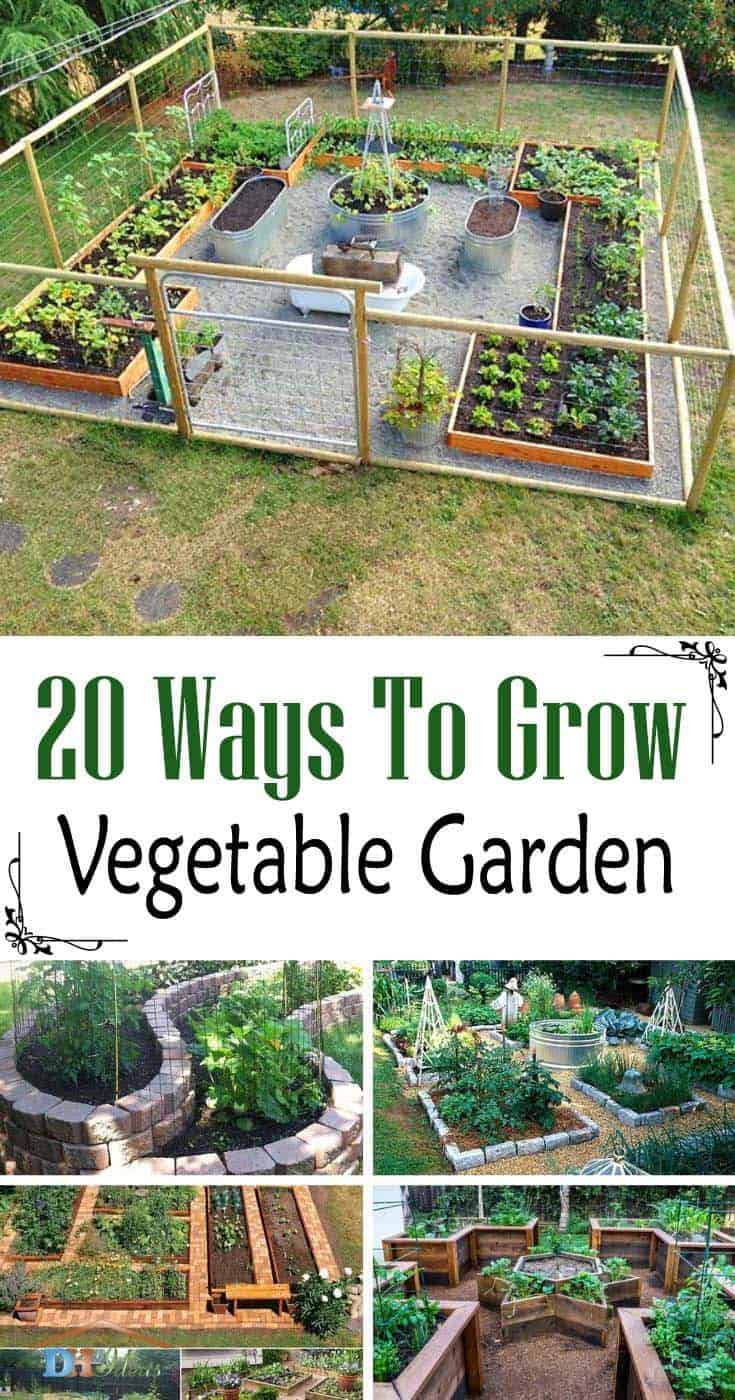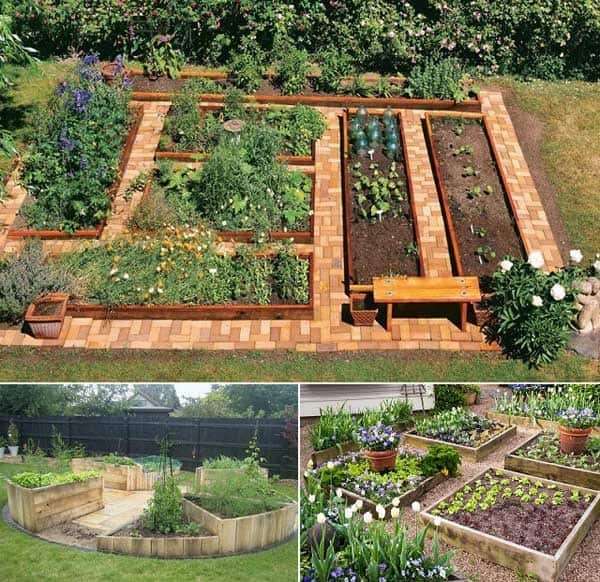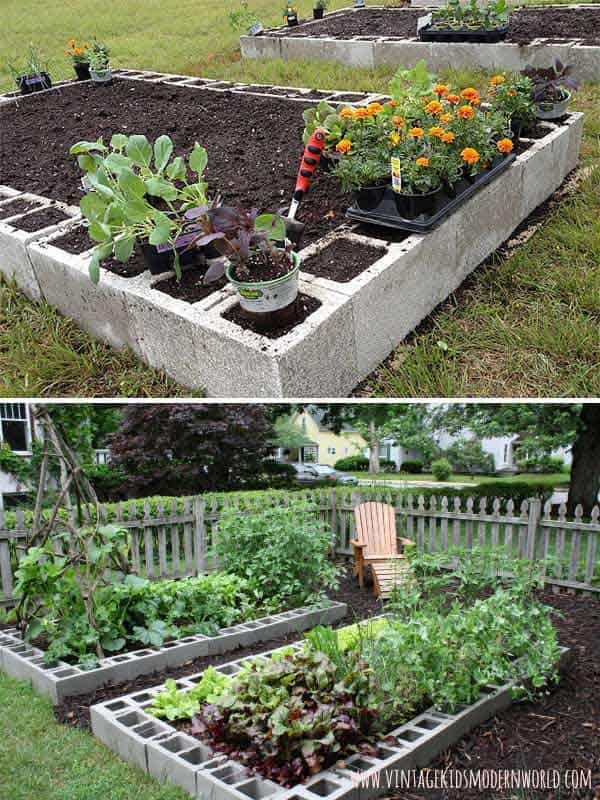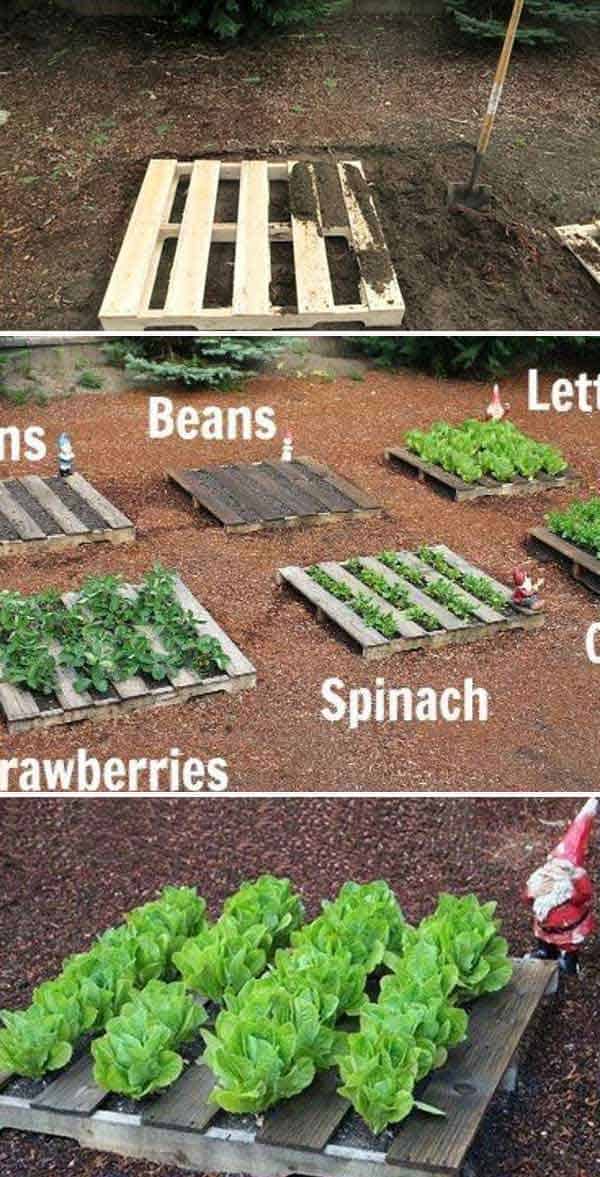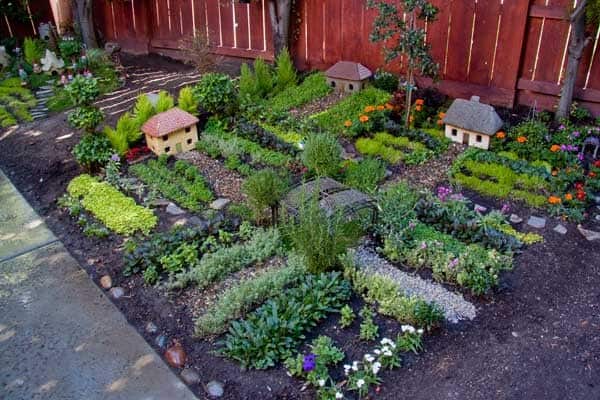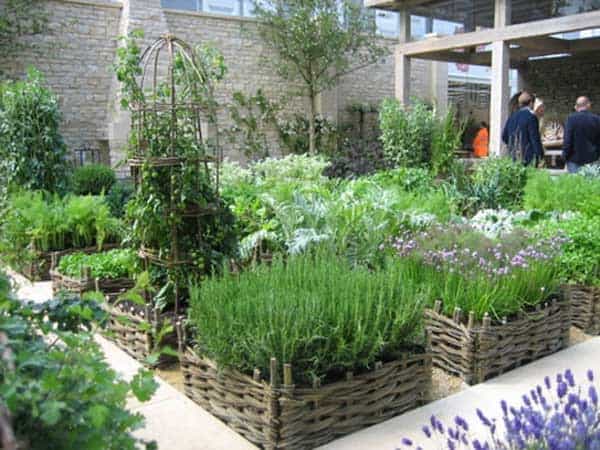When cultivating your own vegetable garden, it’s essential to consider the specific needs of the plants. Most vegetables are demanding when it comes to sunlight and moisture. In fact, many require at least six hours of direct sunlight per day. Moreover, they thrive in areas with consistent moisture levels. It’s crucial to locate your plot in a spot that receives ample sunlight and is near a reliable water source. However, this isn’t the only challenge you’ll face.
Weeds can be a persistent nuisance, requiring frequent removal to keep them from competing with your vegetables for resources. To combat this issue, consider investing in a vertical garden system or exploring creative methods for weed suppression. In this article, you’ll discover 20 innovative solutions for growing a DIY vegetable garden. Get inspired and start planning your own thriving plot today!
Grow a Vegetable Garden in Wooden Beds
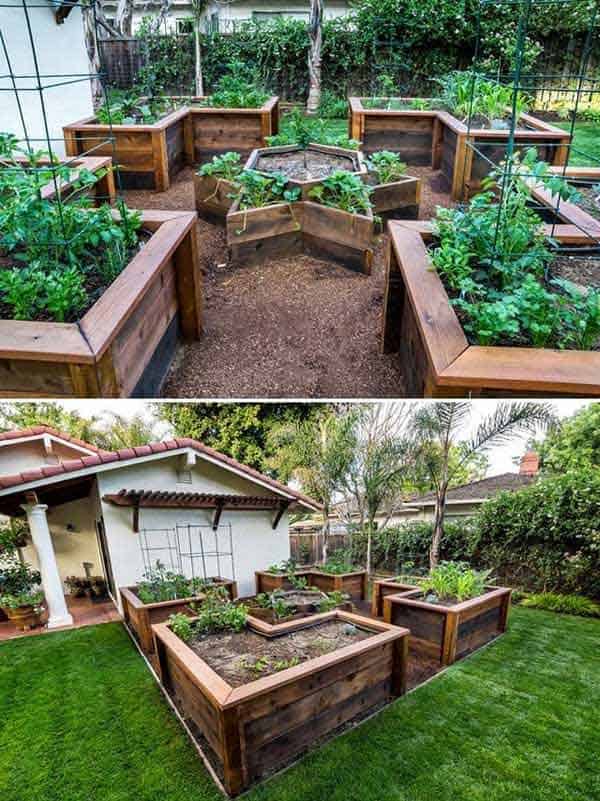
Starting with a visually appealing and productive DIY raised vegetable garden bed made from wood, I opted for a design that maximizes yield while minimizing space. This innovative approach can deliver up to four times more produce than traditional row planting methods. To ensure optimal growth and flavor, it’s essential to utilize naturally rich soil that provides the necessary nutrients for healthy vegetation.
Differentiate your Vegetable Garden
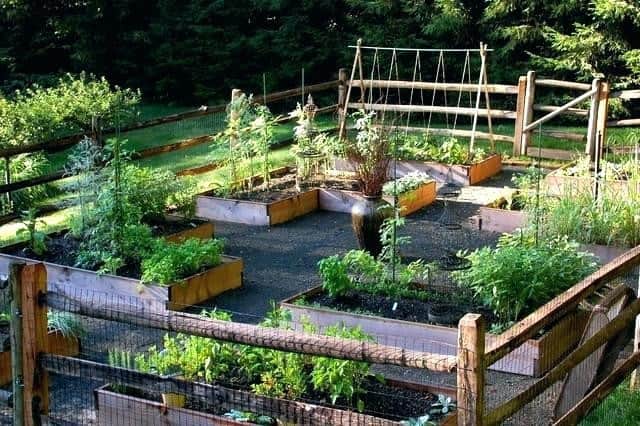
Despite having a compact yard, you can still create a unique DIY vegetable garden by incorporating a simple yet effective low fencing system. This can be achieved by using wood and wire materials that won’t overwhelm the space. To add visual interest and practicality, consider arranging your plants within wooden boxes, leaving small pathways between them for easy access to each plant.
This design not only maximizes your yard’s potential but also provides a beautiful display of your homegrown produce.
The Potager
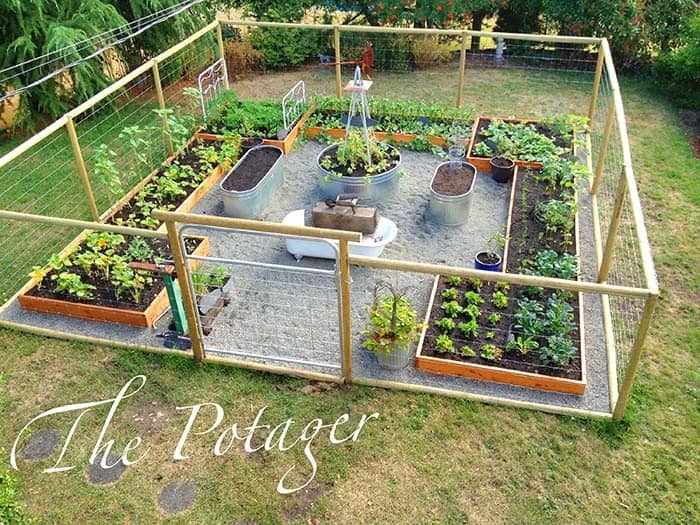
Imagine creating a thriving vegetable garden that also serves as a serene retreat. This unique oasis is nestled behind metal deer fencing, carefully positioned to create a sense of separation from the rest of the yard. As you step into this charming space, you’ll be surrounded by rustic charm, courtesy of vintage accents like an old cast iron claw foot bathtub and a repurposed bed frame. For those interested in exploring this DIY project further, Houseandbloom.
com offers a comprehensive tutorial to guide you through the process.
Trellis and Raised Wooden Boxes Garden Design
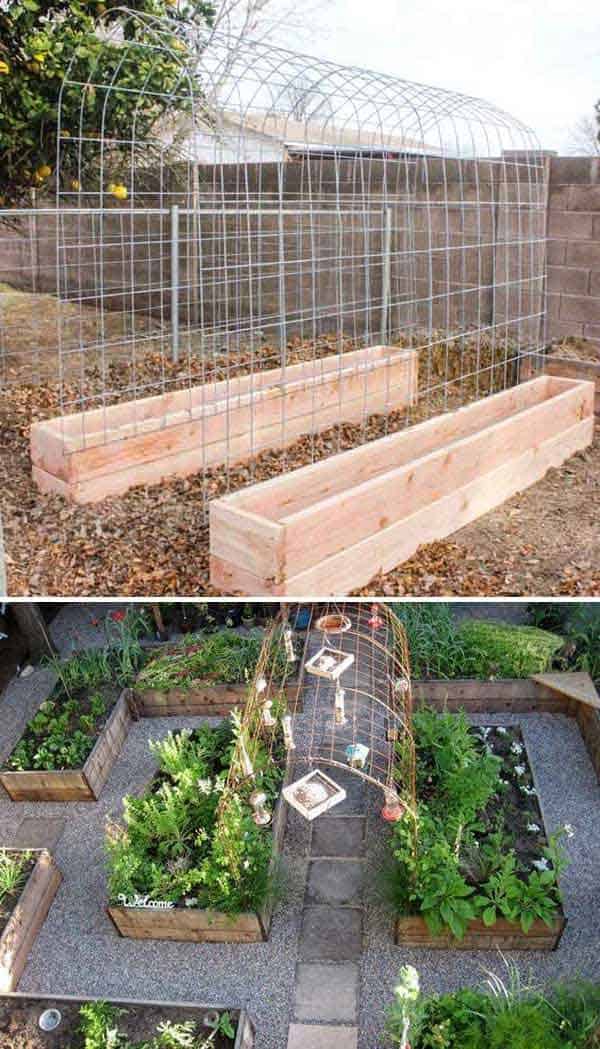
Imagine a verdant oasis in your backyard, where lush greens and colorful blooms draw the eye to a unique structure that’s as functional as it is striking. This DIY project combines the charm of trellises with the practicality of raised wooden garden boxes, creating a one-of-a-kind focal point that will elevate your outdoor space.
DIY Green Beans Tipis (also Teepees)
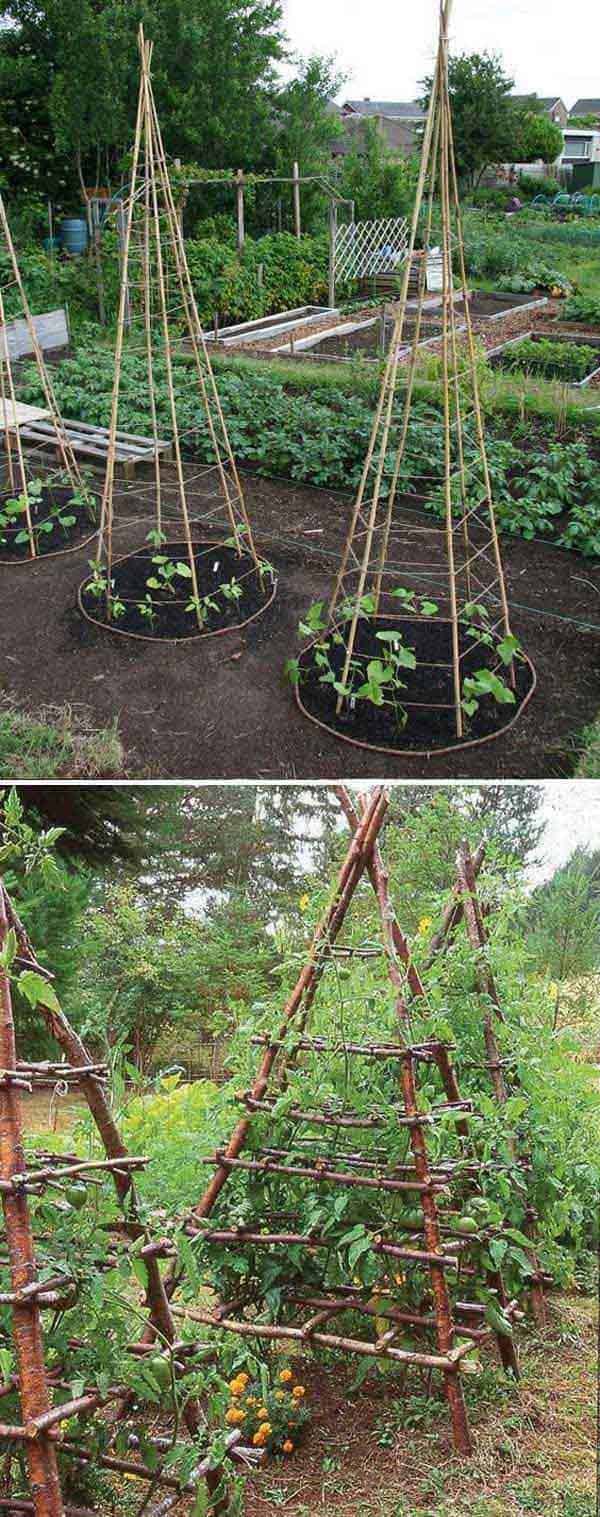
When it comes to growing green beans, a DIY vertical vegetable garden is an excellent space-saving solution. This innovative setup has gained popularity among gardeners who affectionately refer to it as a ‘living teepee’ due to its cone-shaped design. Not only does it provide a unique and fun way to grow vegetables, but it’s also an ideal activity for kids to engage with nature. With its compact size, this DIY project is perfect for small gardens or indoor spaces.
Easy-to-Make Herb Garden in a Spiral
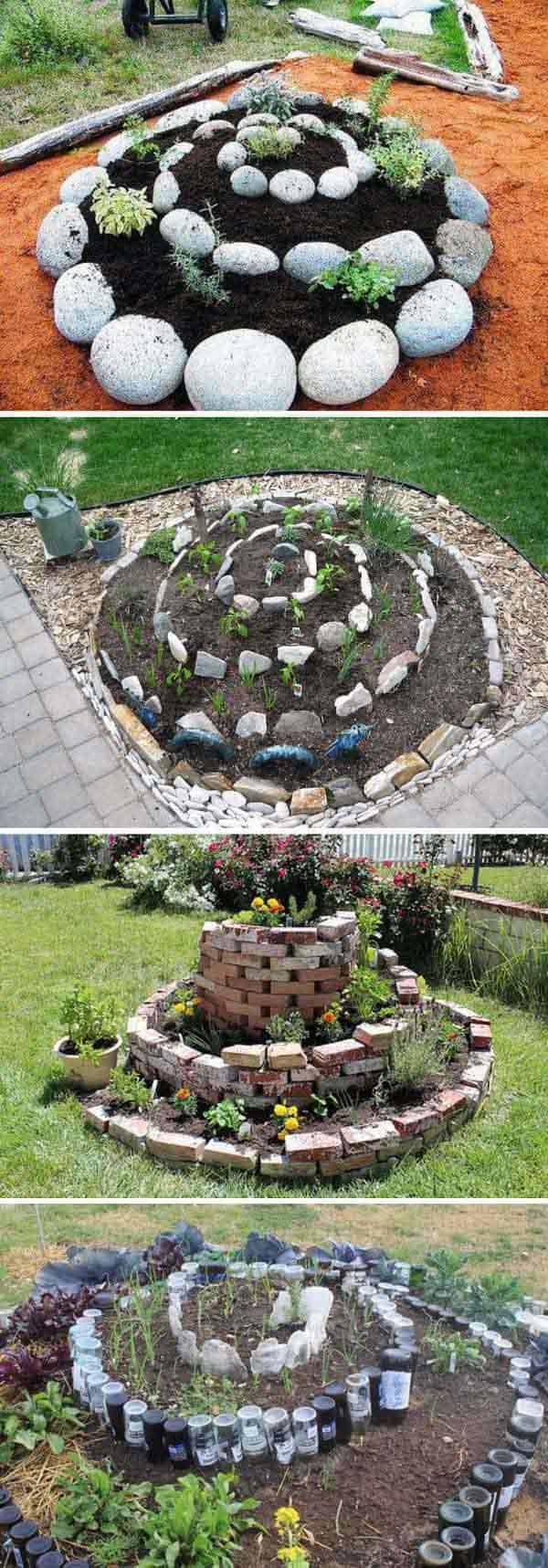
When it comes to creating a thriving herb garden, I’ve always been particularly fond of repurposing materials to create unique and space-efficient designs. One such project that I thoroughly enjoy is crafting an herb garden within the confines of a cobblestone piral – perfect for those with limited outdoor spaces or seeking a charming addition to their home’s decor.
Alternatively, you can also upcycle empty glass bottles, jars of varying sizes, and even bricks to create a visually appealing and functional herb garden that will not only add a touch of elegance to your garden but also provide a bountiful harvest of fresh herbs.
Cobblestones Raised Beds
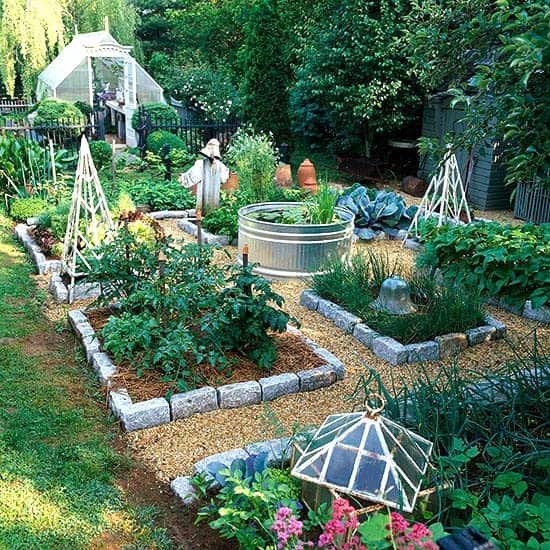
For homeowners with irregularly shaped yards, this project offers a unique opportunity for creative expression. Reclaimed cobblestones were repurposed to create a set of raised beds, which are easily accessible thanks to narrow gravel pathways. These paths also simplify maintenance, making it a practical and visually appealing solution for garden enthusiasts.
Benefits to Grow Your Own Vegetable Garden
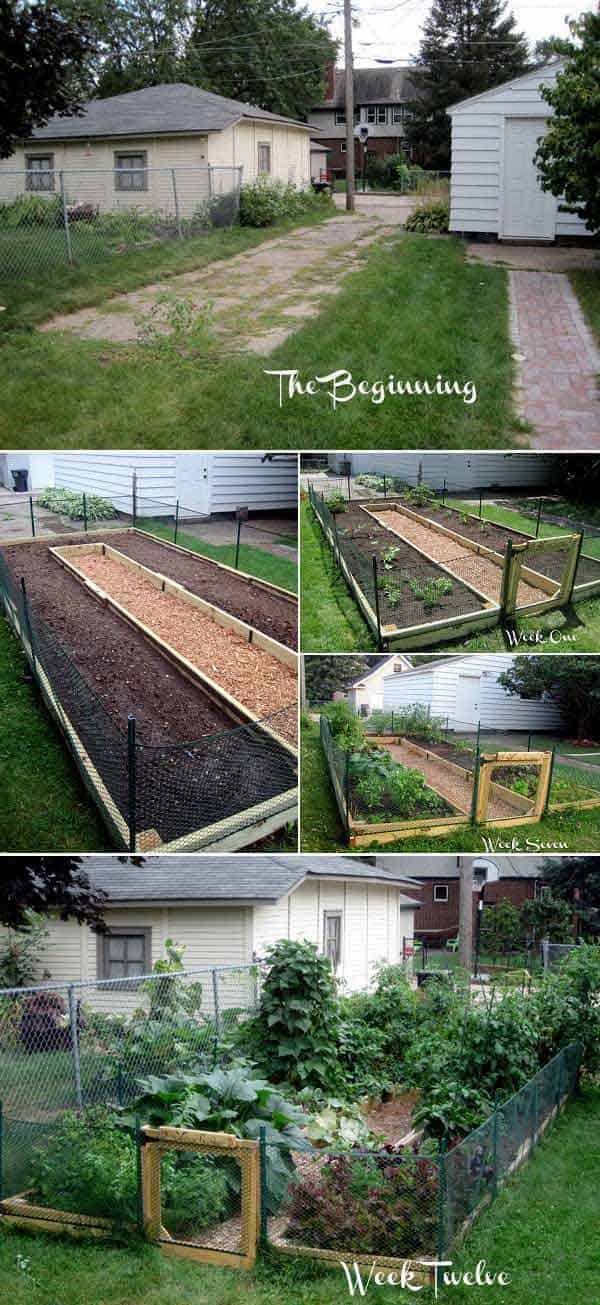
While the upfront cost of building a personal vegetable garden may seem daunting, it’s essential to weigh the benefits against the costs. Say goodbye to synthetic pesticides and harsh chemicals, and hello to fresh, wholesome produce. By embracing this DIY project, you’ll not only reap the rewards of homegrown vegetables but also contribute to a healthier environment and community.
Layered Garden Idea
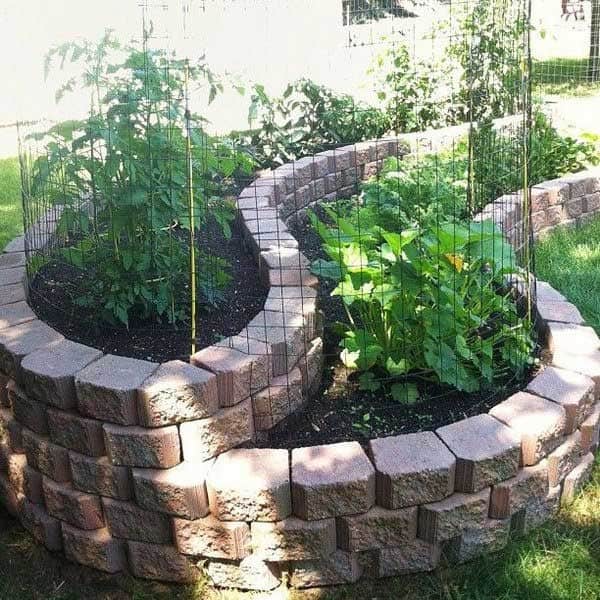
When designing vegetable beds, consider building them with width in mind, allowing for a layered garden that adds visual interest through varying colors, textures, and a softening edge. This approach is reminiscent of crafting a brick flower bed, where creativity in shape can be a welcome addition.
Colorful Idea
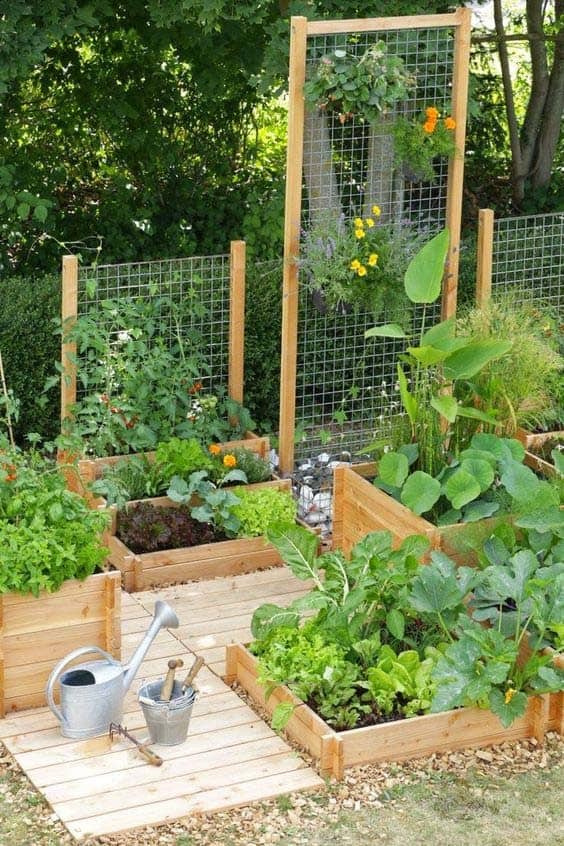
Transform your outdoor space by combining vibrant vegetables with beautiful perennial plants. By experimenting with different heights and colors, you can create a stunning, partially elevated garden that will be the envy of your neighbors. Start by selecting a variety of colorful potted perennials and complement them with an assortment of vegetables. Don’t be afraid to get creative and play with different textures, shapes, and hues to create a truly unique and visually appealing display.
Perky Narrow Paths Between the Raised Beds
Pathway gardens not only add architectural flair and functionality to small vegetable-filled plots, but also neatly demarcate the boundaries of one’s yard. Crafted from a variety of materials such as pavers, stones, wood, bricks, or composite decking, these pathways seamlessly integrate with their surroundings.
DIY Cement Bricks Raised Vegetable Beds Idea
One innovative approach to creating an elevated gardening space is by constructing raised garden beds using cement bricks that seamlessly integrate with your backyard landscape. With the right tools, including a diamond-grit circular saw, you can build these structures in just 2-3 days, making it a feasible DIY project for those with limited time and expertise.
Benefits of the Vertical Vegetable Gardening
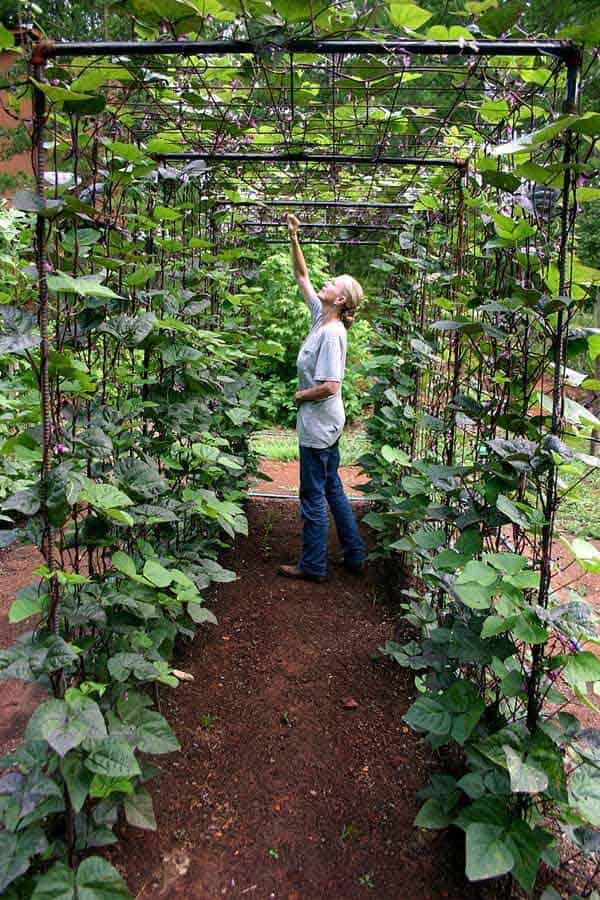
Elevate your outdoor space by constructing a vertical vegetable garden in your backyard. This innovative approach maximizes growing room, reduces the risk of pest and disease infestations, and adds a touch of elegance to your patio area. With this setup, you can effortlessly cultivate vining varieties like tomatoes, cucumbers, squash, gourds, peas, and pole beans, making it an ideal solution for small or irregularly shaped plots.
Amazing DIY Stair-Cased Pallet Planter
Why not bring some rustic charm to your backyard by transforming a glide into a unique wooden pallet planter? If you’re lucky enough to have a glide in your yard, this DIY project is an excellent opportunity to get creative and add some visual appeal to your fresh food garden. The beauty of using a wooden pallet planter lies in its natural, unpretentious look – simply leave the wood unpainted to let its organic charm shine through.
This DIY project requires minimal effort and materials, making it perfect for anyone looking to spruce up their outdoor space.
Practical DIY Vegetable Garden Box
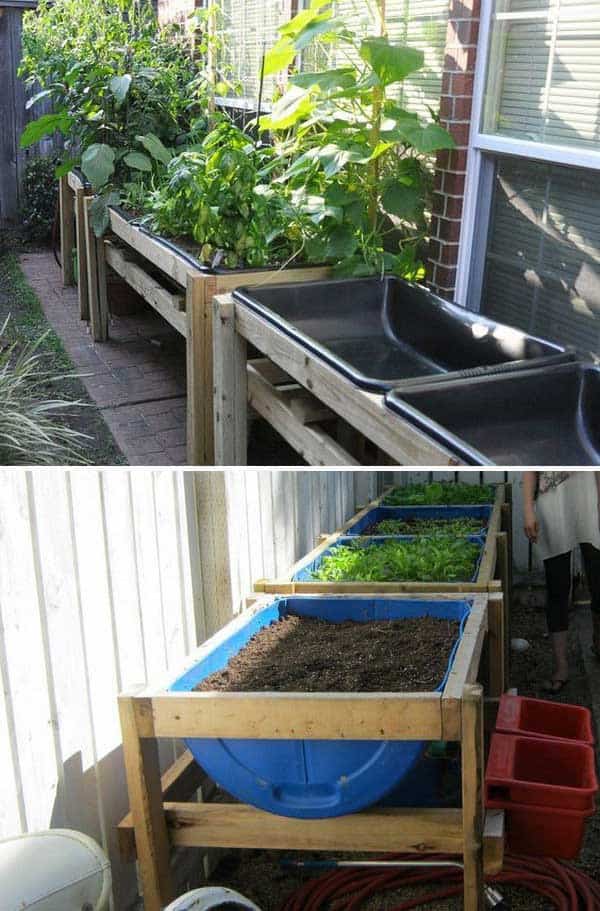
A prime example of cultivating one’s own produce without requiring a substantial yard space can be seen in DIY raised gardens that thrive in even the smallest of outdoor areas. Despite the proximity to building walls, these garden beds are surprisingly easy to maintain, with watering and harvesting becoming the primary concerns. However, it’s crucial to ensure your vegetables receive sufficient sunlight on a daily basis.
Creative DIY Pallet Garden
The versatility of pallet gardens is truly astounding. In just one square meter, you can cultivate an impressive variety of vegetables. One of the most exciting aspects of this type of gardening is the range of options available to you. Spinach, beans, lettuce, and strawberries are all great choices for a shallow-rooted harvest. Additionally, you can also grow other herbs and vegetables that thrive in similar conditions.
Wonderland Vegetable Garden
Harnessing the power of nature, consider incorporating seasonality into your gardening routine. By planting at strategic times, you can reduce the physical demands associated with gardening. To add an extra layer of whimsy to your vegetable plot, why not introduce some vibrant seasonal flowers? These colorful blooms will not only brighten up the space but also provide a unique opportunity for creative expression.
Take it a step further by incorporating miniature garden features like tiny houses and ponds, reminiscent of fairy gardens. The end result is a visually appealing and engaging outdoor space that reflects your personality.
Farmhouse Style Vegetable Beds
The yard’s rustic charm is enhanced by wooden vegetable beds, which not only add a farmhouse flair but also help to warm the soil come springtime. It’s essential to consider that these planters may require some additional hydration during the peak summer heat, particularly if you’re cultivating plants with specific moisture needs.
Green House Raised Bed
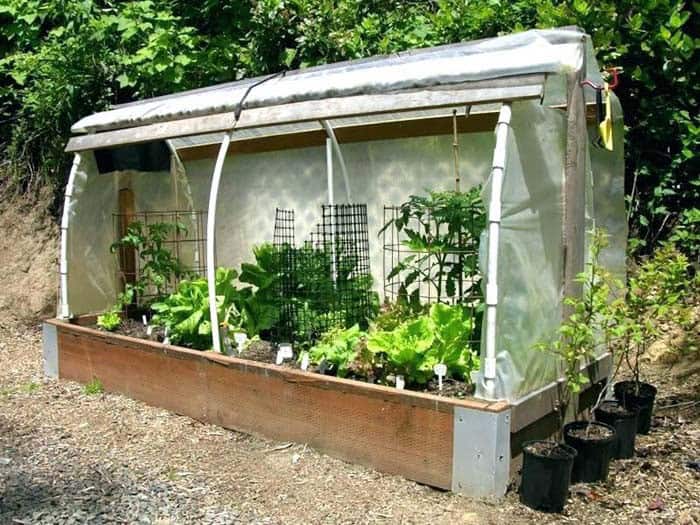
To create a multi-seasonal vegetable garden, consider constructing a hoop house directly atop a raised bed. This design allows for optimal protection from harsh winter frosts while still providing ample sunlight during warmer months.
DIY Vertical Garden Pyramid
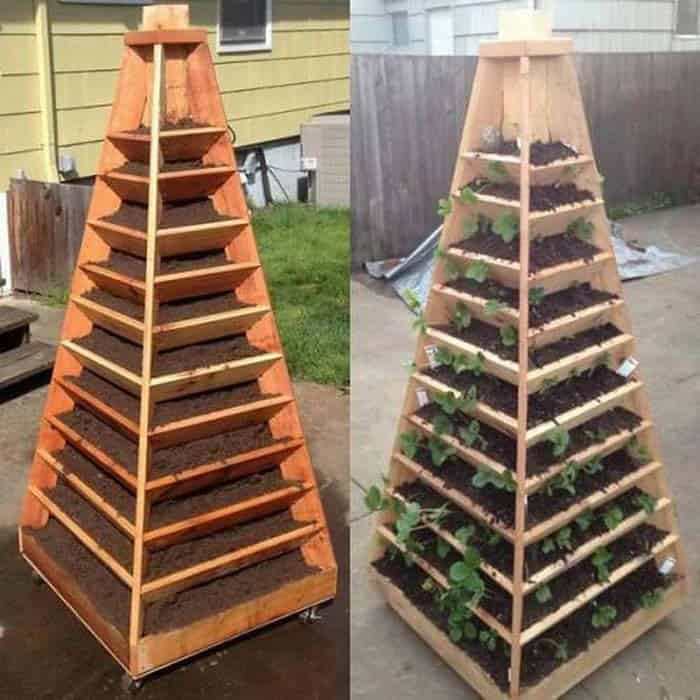
The standout feature of this strawberry planter – which also doubles as a herb garden – is its space-efficient design. Additionally, its small wheels allow for effortless repositioning around the yard, making it an ideal find for any gardener. One tip to keep in mind: familiarize yourself with the various raised garden bed kits available by reading our comprehensive guide, 21 Raised Garden Bed Kits – Ultimate Buying Guide.
In recent times, the global market has witnessed a significant surge in vegetable prices. Moreover, many commercially available options are laden with pesticides and lackluster in terms of taste. So, why not give gardening a try? By implementing some of the ideas outlined earlier on how to grow a vegetable garden, you can take control of your produce and enjoy the fruits of your labor – literally.
